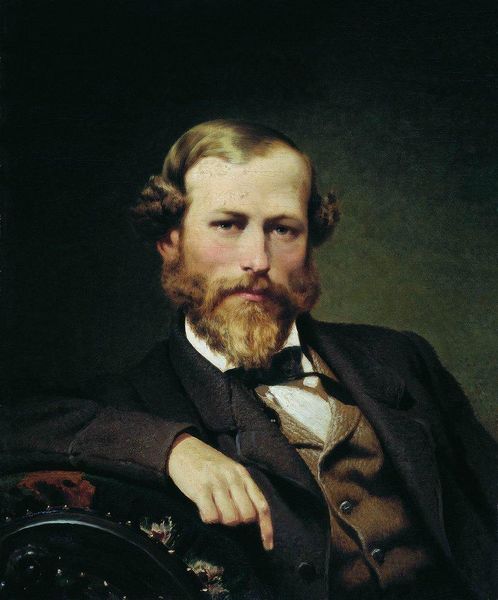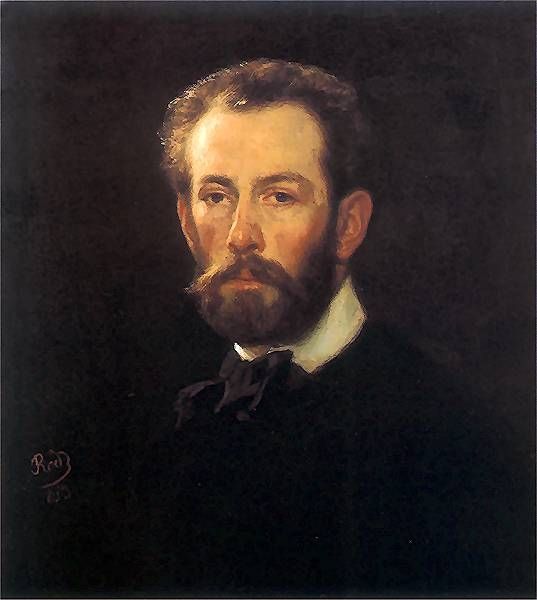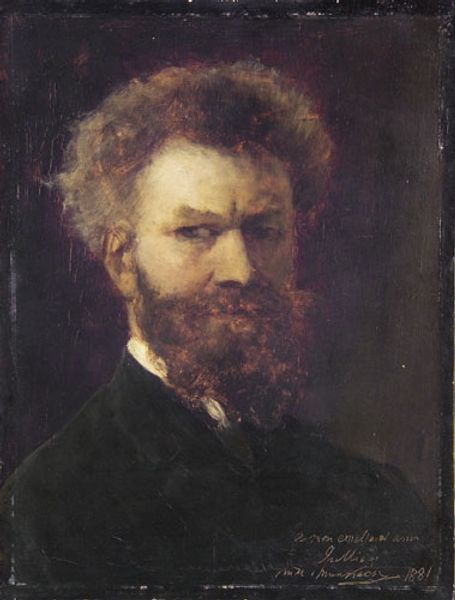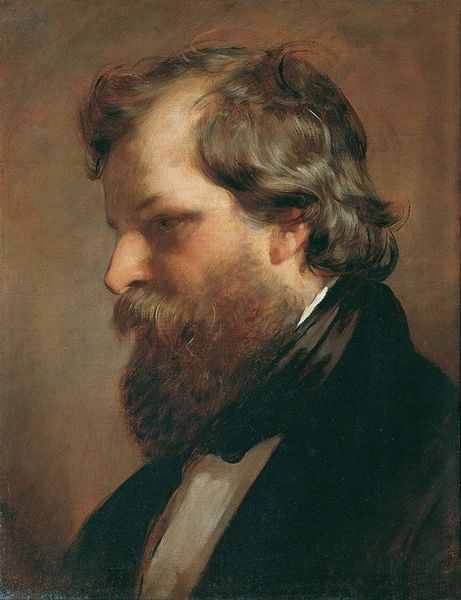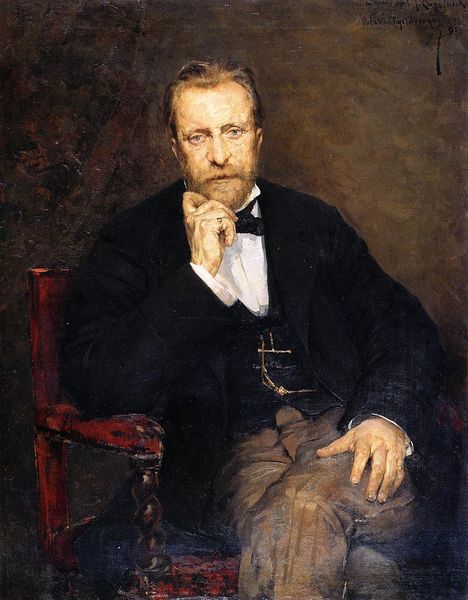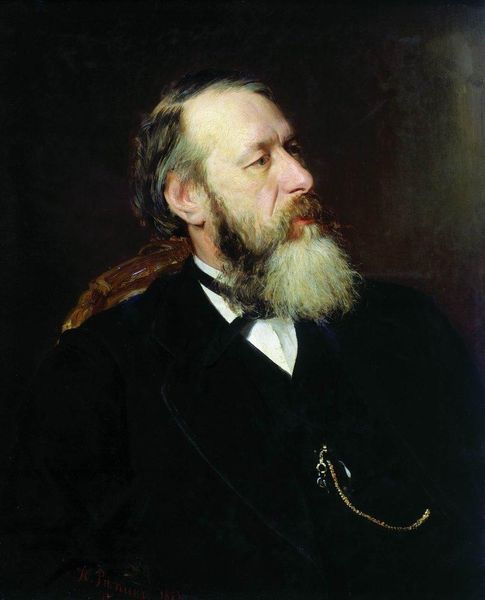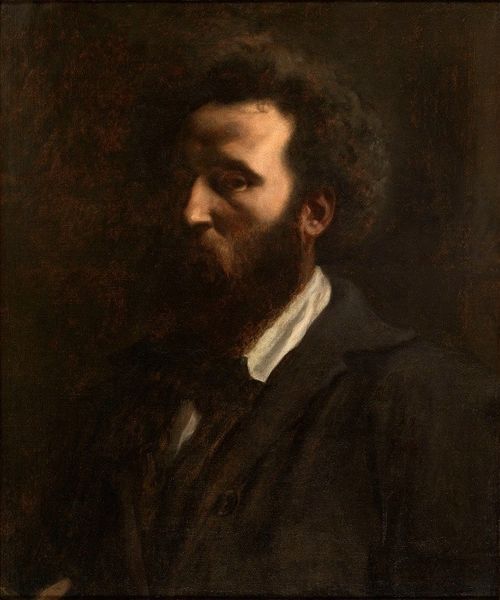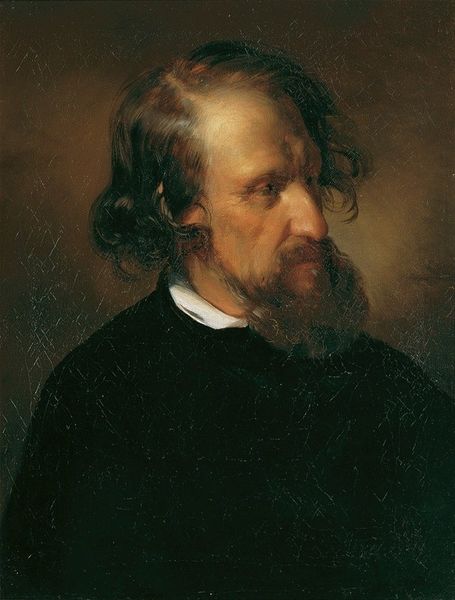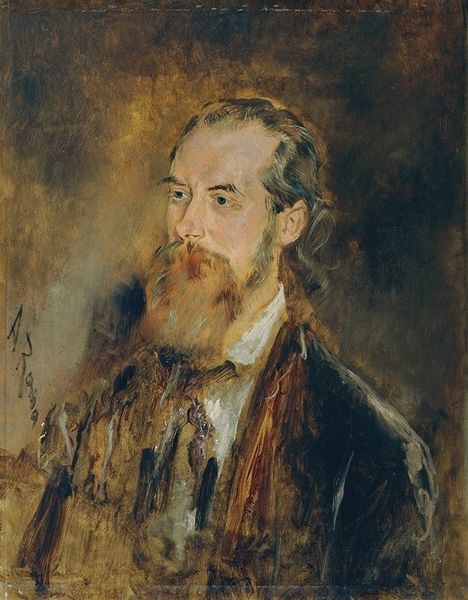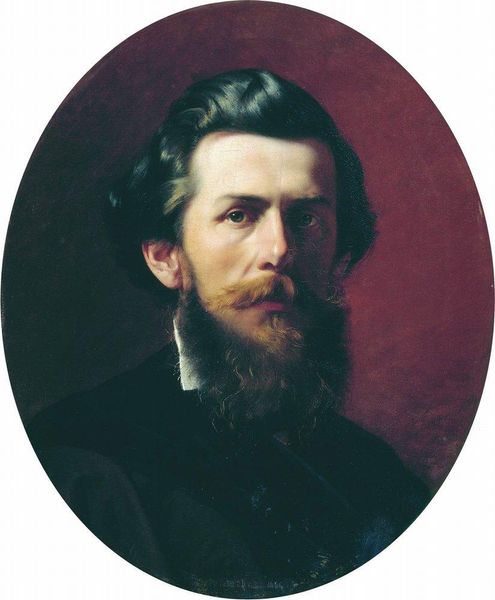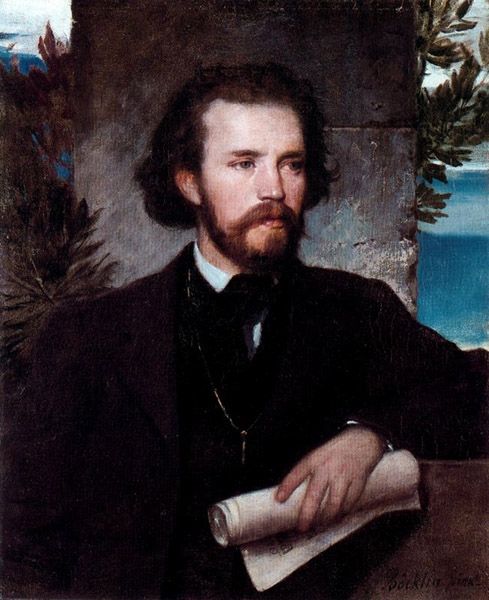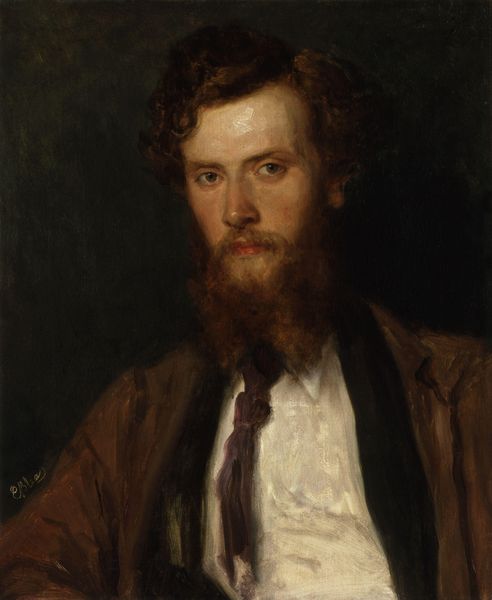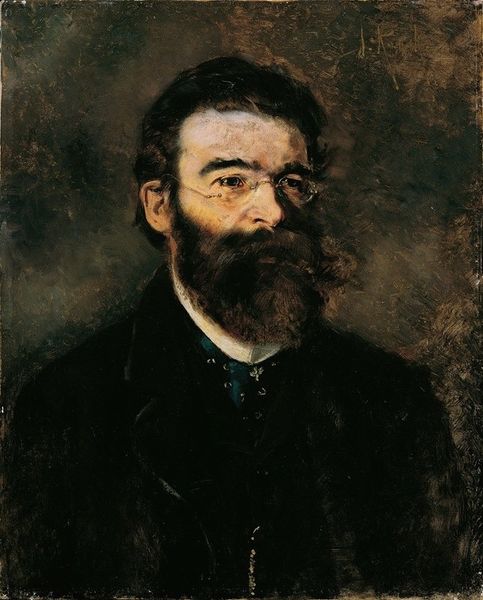
Copyright: Public domain
Editor: Here we have Jean-Paul Laurens' "Self-Portrait," created in 1876 using oil paints. There's something intense about his gaze that really pulls you in, like he's looking straight into your soul. How do you interpret this work? Curator: Isn't it something? You know, sometimes I wonder if he was simply trying to capture his likeness, or if it was a moment of deep introspection, the kind that hits you when you're alone with a canvas. That beard could hide a multitude of anxieties, don’t you think? What do you see behind his eyes? Editor: I think he’s portraying himself as both an intellectual and someone a bit burdened. Maybe it reflects the serious themes he was known for? All those history paintings... Curator: Absolutely! And it’s interesting to think about how academic painting at the time was wrestling with Realism, which gives us such striking details. Like that little red rosette on his coat – a subtle clue to his status, maybe? Almost as if he's asking us, "Am I good enough?". What I find fascinating is how much we read into self-portraits, projecting our own desires and interpretations onto them. He’s not just Laurens; he’s become a mirror, hasn't he? Editor: Definitely. I didn't catch the rosette before, so thank you for pointing it out. This was much more complex than I initially thought. Curator: Exactly! Art is never just what's on the surface, is it? Sometimes, it's like unlocking a secret whispered from across the ages. A rather painterly secret, in this case.
Comments
No comments
Be the first to comment and join the conversation on the ultimate creative platform.
